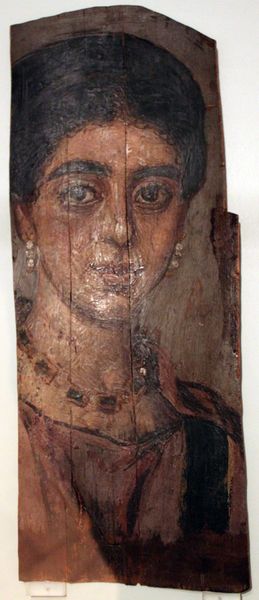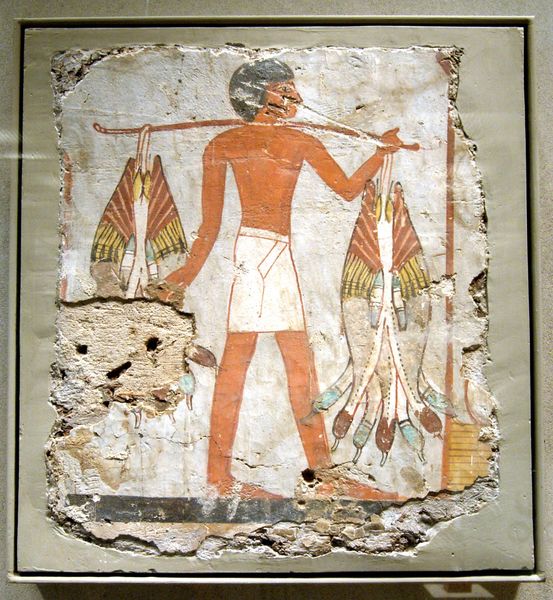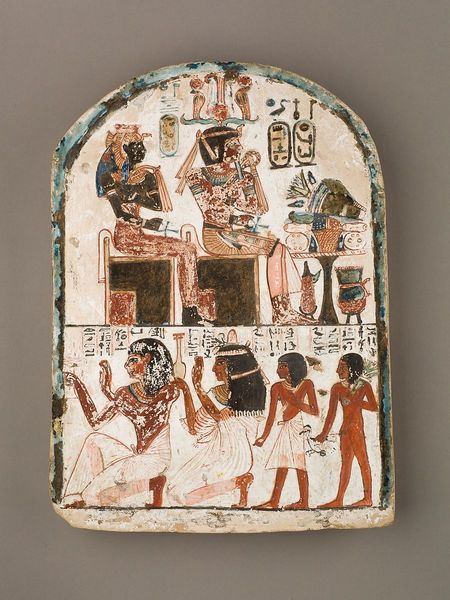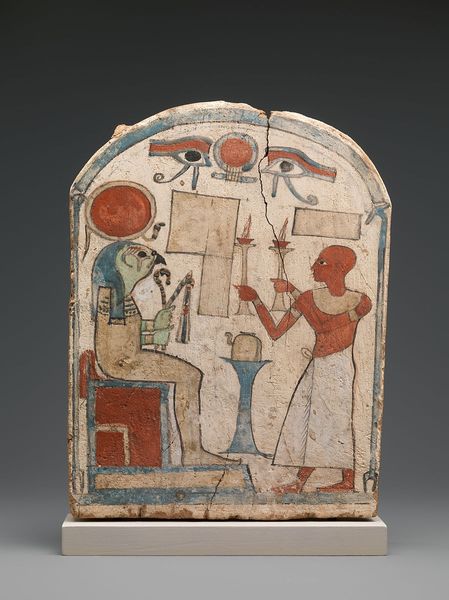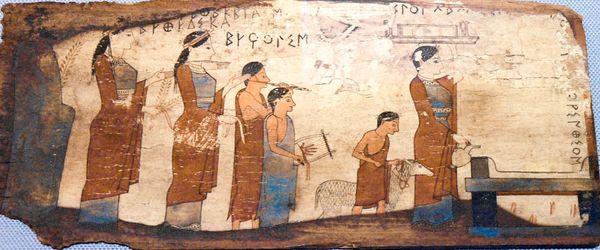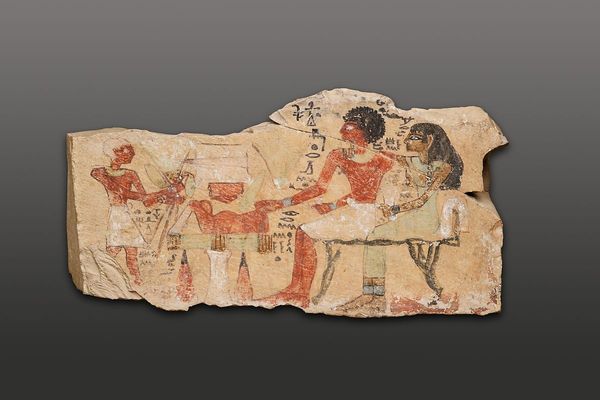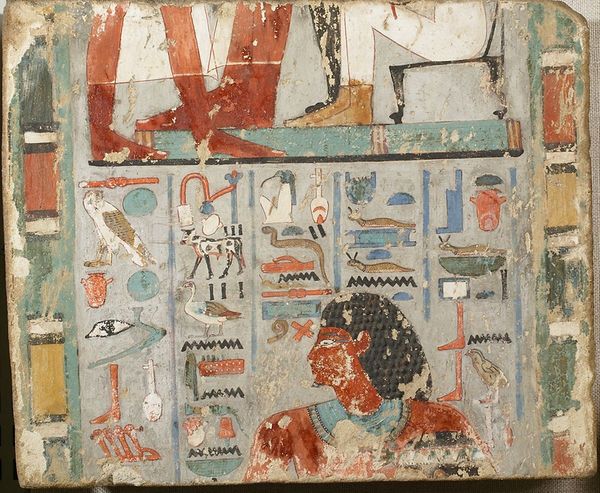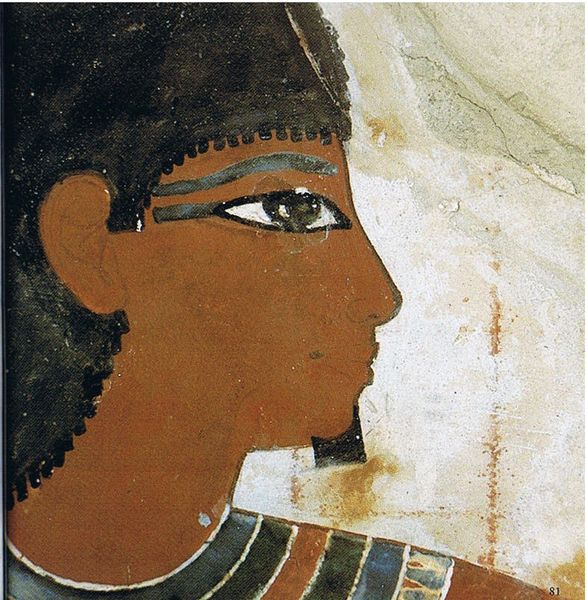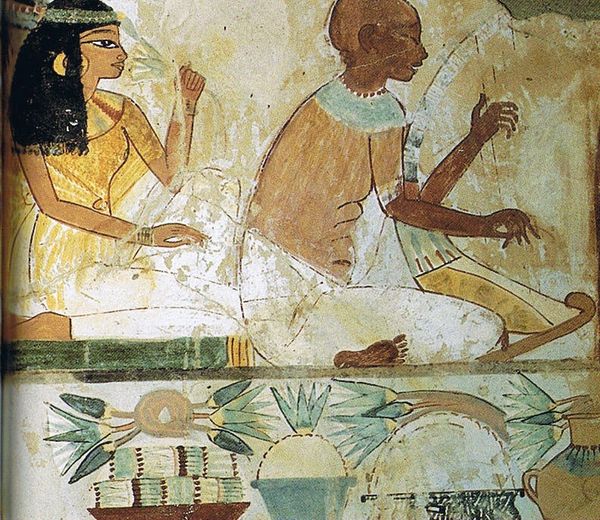
tempera, painting, wood
#
portrait
#
allegory
#
tempera
#
painting
#
greek-and-roman-art
#
ancient-egyptian-art
#
oil painting
#
ancient-mediterranean
#
wood
#
history-painting
#
watercolor
Copyright: Public domain
Editor: Here we have "Hermopoli ovest," a tempera painting on wood found in the Louvre. It reminds me of a very ancient graphic novel! The style is very stylized and striking. How do you interpret this work? Curator: This portrait is a powerful example of the complex cultural landscape of Roman Egypt. These funerary portraits offer a fascinating lens through which to view identity. What strikes you about the subject’s representation? Editor: Well, there's an interesting combination of Roman realism with Egyptian symbolism in the way the subject is painted with what seem like both Roman and Egyptian characteristics. Curator: Exactly! And consider the context: Egypt was under Roman rule, leading to a fusion of artistic styles and cultural beliefs. These portraits weren't just about likeness; they were about constructing an identity that navigated these overlapping worlds. The Roman style provides individuality, yet the symbols tie into older belief systems of the afterlife and spiritual power. Editor: So it’s more than just a portrait. It represents something deeper, a negotiation of identities? Curator: Precisely! It makes us question the concept of a single, fixed identity, doesn’t it? Especially when we consider this person’s life likely spanned across different communities with different expectations. It encourages us to reflect on the intersections of power, representation, and cultural hybridity within the painting. Editor: I never would have considered those elements. Thank you for helping me understand how historical context informs this artwork’s statement about identity. Curator: It’s in understanding these intersecting contexts that we unlock a deeper appreciation for the artistry and its cultural significance.
Comments
No comments
Be the first to comment and join the conversation on the ultimate creative platform.
